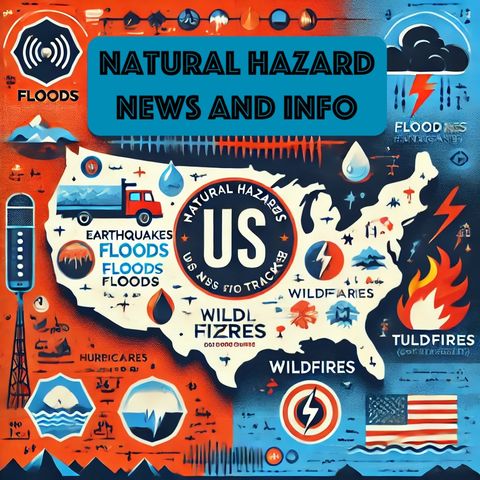"Yellowstone's Thermal Infrared Imaging: Pioneering Science and Safety in America's First National Park"

Download and listen anywhere
Download your favorite episodes and enjoy them, wherever you are! Sign up or log in now to access offline listening.
"Yellowstone's Thermal Infrared Imaging: Pioneering Science and Safety in America's First National Park"
This is an automatically generated transcript. Please note that complete accuracy is not guaranteed.
Description
Yellowstone National Park, known for its spectacular geothermal features and abundant wildlife, holds another remarkable distinction: it was one of the earliest locations to utilize airborne thermal infrared imaging for...
show moreAirborne thermal infrared imaging involves capturing heat emitted from the Earth's surface. Because different materials emit varying levels of infrared energy based on their temperatures, thermal images can reveal temperature anomalies that are not visible to the naked eye. In Yellowstone, this technology has been indispensably used to identify and monitor geothermal activities such as hot springs, geysers, and fumaroles.
The initial application in 1961 marked a pioneering effort in utilizing thermal imaging for ecological and geological studies. Since then, it has continued to evolve, becoming increasingly sophisticated and precise. This early adoption allowed park scientists to create thermal maps, identifying geothermal hotspots with remarkable accuracy. Such maps serve multiple purposes: they help track changes over time, detect new or shifting geothermal features, and monitor potential hazards.
One of the most significant aspects of thermal infrared imaging in Yellowstone is its ability to contribute to public safety. The park sits atop a supervolcano, and while a massive eruption is unlikely in the near future, the hydrothermal system is highly dynamic and can pose risks. For instance, underground thermal activity can lead to the sudden formation of new geysers or hot springs, which can be dangerous to unwary hikers or park infrastructure. By continually monitoring these changes, thermal imaging helps authorities take preemptive actions to close off hazardous areas or issue warnings.
Moreover, the data gathered from these thermal images has been vital for scientific research. Researchers have been able to correlate thermal features with underlying geological structures, enhancing our understanding of the geothermal system's mechanics. This has broad implications, from advancing geothermal energy exploration to refining models of volcanic activity.
The benefits extend to wildlife conservation as well. Many of Yellowstone’s species, from thermophilic bacteria to large mammals, interact with geothermal features. Thermal imaging assists in studying these interactions without disturbing the natural habitat, providing insights into how these ecosystems operate and how they might be affected by environmental changes.
The use of airborne thermal infrared imaging also underscores Yellowstone’s role as a living laboratory, where cutting-edge technology meets natural wonders. This intersection of technology and nature not only aids in preserving the park but also paves the way for other natural reserves to adopt similar technologies for conservation and safety.
Over six decades since its inception, airborne thermal infrared imaging remains a cornerstone of Yellowstone’s comprehensive monitoring efforts, capturing the subtle and not-so-subtle shifts in one of the planet's most dynamic environments. As technology advances, its applications are bound to become even more refined and insightful, ensuring that Yellowstone continues to be both a marvel of natural beauty and a beacon of scientific progress.
Information
| Author | QP-4 |
| Organization | William Corbin |
| Website | - |
| Tags |
Copyright 2024 - Spreaker Inc. an iHeartMedia Company

Comments